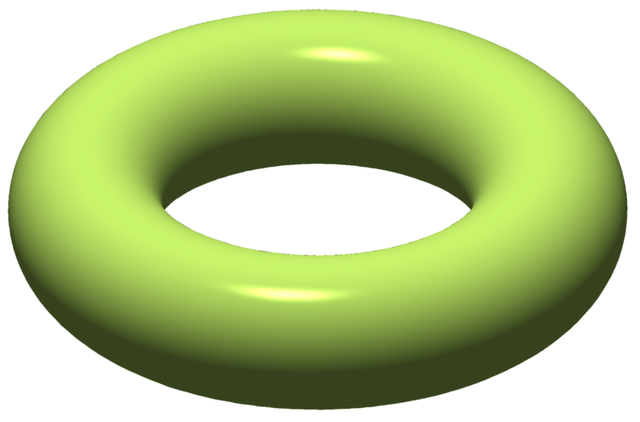 |
This is a file from the Wikimedia Commons. Information from its description page there is shown below.
Commons is a freely licensed media file repository. You can help.
|
|
|
This chart was created with MATLAB. |
| Description |
Illustration of torus |
| Date |
01:12, 13 July 2008 (UTC) |
| Source |
self-made, with MATLAB |
| Author |
Oleg Alexandrov |
| Public domainPublic domainfalsefalse |
 |
I, the copyright holder of this work, release this work into the public domain. This applies worldwide.
In some countries this may not be legally possible; if so:
I grant anyone the right to use this work for any purpose, without any conditions, unless such conditions are required by law.Public domainPublic domainfalsefalse
|
 |
This math image could be recreated using vector graphics as an SVG file. This has several advantages; see Commons:Media for cleanup for more information. If an SVG form of this image is already available, please upload it. After uploading an SVG, replace this template with {{ vector version available|new image name.svg}}. |
Source code
% illustration of a torus, obtained as an isosurface
function main()
% big and small radii of the torus
R = 3; r = 1;
Kb = R+r;
h = 0.1; % h is the grid size. Smaller h means prettier picture.
X = (-Kb-h):h:(Kb+h); m = length(X);
Y = (-Kb-h):h:(Kb+h); n = length(Y);
Z = (-r-h):h:(r+h); k = length(Z);
W = zeros(m, n, k); % the zero level set of this function will be the desired shape
for i=1:m
for j=1:n
x = X(i);
y = Y(j);
W(i, j, :) = (sqrt(x^2+y^2)-R)^2 + Z.^2-r^2; % torus eqn, vectorize in Z
end
end
figure(4); clf; hold on; axis equal; axis off;
H = patch(isosurface(W, 0));
isonormals(W, H);
light_green=[184, 224, 98]/256;
% set some propeties
set(H, 'FaceColor', light_green, 'EdgeColor','none', 'FaceAlpha', 1);
set(H, 'SpecularColorReflectance', 0.1, 'DiffuseStrength', 0.8);
set(H, 'FaceLighting', 'phong', 'AmbientStrength', 0.3);
set(H, 'SpecularExponent', 108);
daspect([1 1 1]);
axis tight;
colormap(prism(28))
% viewing angle
view(-146, 32);
% add in a source of light
camlight (-10, 54); lighting phong;
%save as png
print('-dpng', '-r400', sprintf('Torus_illustration.png'));
File usage
The following pages on Schools Wikipedia link to this image (list may be incomplete):
Through Schools Wikipedia, SOS Children's Villages has brought learning to children around the world. SOS Children believes that a decent childhood is essential to a happy, healthy. Our community work brings families new opportunities through education, healthcare and all manner of support. Have you thought about sponsoring a child?




